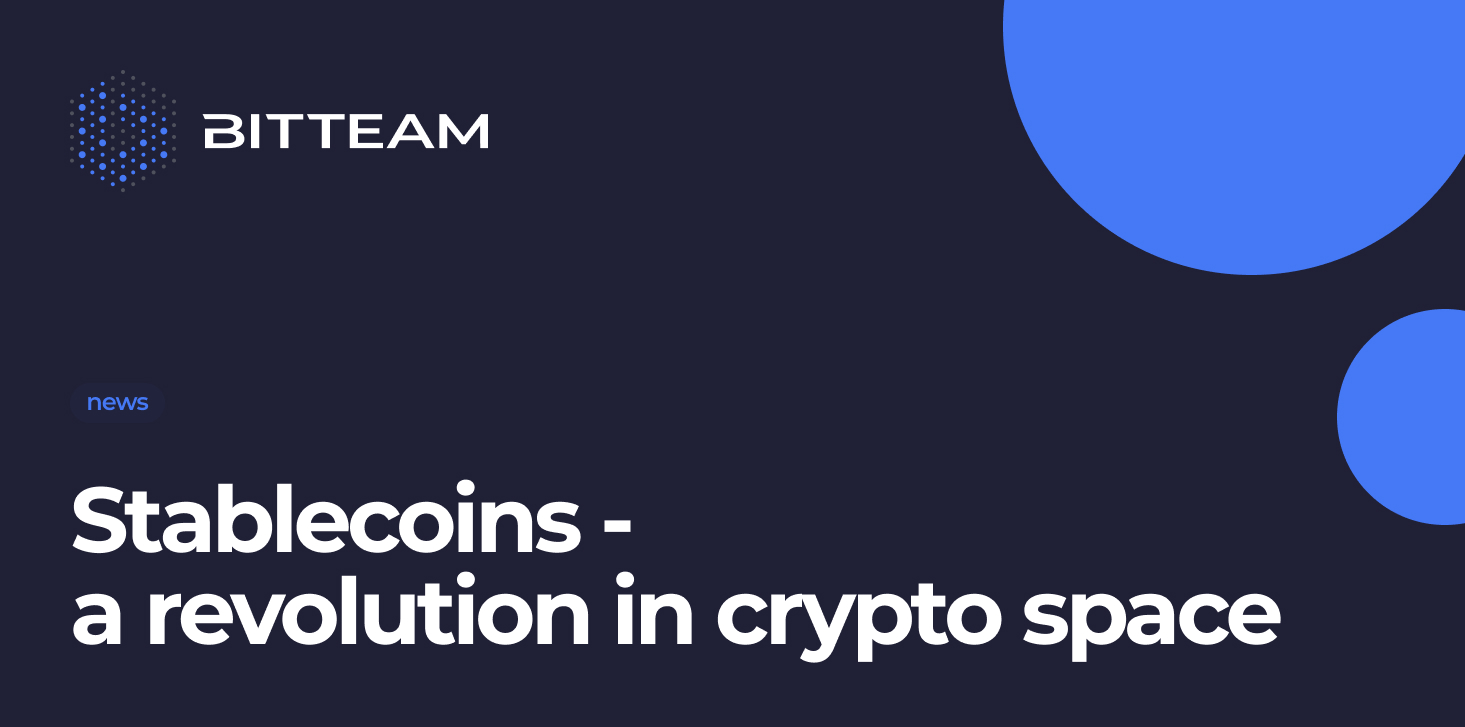Top 5 Stablecoins in the Market
A stablecoin represent an asset designed for supporting stable value even in the period of high volatility. According to the list of projects published on Coinmarketrate.com, this is achieved by linking the value of a stablecoin to an asset more resistant to market changes such as the US dollar or gold. This ensures that the value of the stablecoin remains relatively stable even when the rest of the market is experiencing volatility.
Stablecoins are divided into several types:
- Stablecoins linked to fiat
Fiat stablecoins are backed by such currencies as euro, pound sterling or the US dollar. These are the simplest stable coins with a 1:1 ratio. This also means that one stablecoin is equal to one unit of fiat currency providing it. Examples of stable fiat-linked coins are USDT and USDC.
The price of a fiat-linked stablecoin remains stable relative to the fiat currency. But this depends on the fact that the trusted centralized issuing party is properly regulated.
- Stable coins linked to goods
Stablecoins linked to commodities are backed by valuable physical assets such as precious metals, real estate, oil and other commodities. This essentially makes them a representation of these physical assets based on blockchain, with all the security and accessibility of digital assets.
The most common commodity used as collateral for this kind of stablecoin is gold. But it should be noted that these stable coins tied to a commodity are stable only as much as the asset that provides them is stable.
The main benefit of these tokens is that they make investments in commodities much more affordable. One hardware wallet can store billions of dollars backed by gold but physically storing the same amount of gold is a much more complicated task.
- Algorithmic Stable Coins
Algorithmic stable coins use complex sets of instructions to maintain their value and are not backed by commodities or fiat currencies. Instead of this, other cryptos are responsible for these tokens which made adjustments to their algorithms depending on the supply and demand. Mining these tokens also often requires excess collateral.
If the price of a stablecoin rises, the algorithm corrects itself by issuing and selling more coins, and when the price falls, the algorithm corrects itself by buying tokens to keep prices afloat. These stable coins fairly reliably protect their binding, but unexpected events or “black swan” events can cause irreversible damage to tokenomics and collateral reserves.
- Seigniorage or Unsecured Stable Coins
Just as algorithmic stable coins, these tokens are used by smart contracts to execute precise sets of instructions that support token binding. However, there are no reserves in seigniorage`s stable coins. Instead, they rely on complex processes that regulate their circulating supply. This includes issuing and selling or buying, and burning tokens depending on the level of supply and demand.
Top 5 projects for creating stable coins
- TrueUSD (TUSD)
TrueUSD is an ERC-20 stablecoin backed by US dollars, which is fully secured, guaranteed and verified by a third party. TUSD is part of the TrustToken ecosystem, which includes other fiat stable coins, and uses escrow accounts to reduce counterparty risk and provide token holders with legal protection against misappropriation of funds. To store TrueUSD token funds, the platform also cooperates with registered fiduciaries and banks.
- Pax Dollar (USDP)
Pax Dollar is another stable currency tied to the US dollar, the currency that was created to improve the financial ecosystem by creating a frictionless global network. Paxos company, standing behind USDP, is also responsible for PAXG token, the most popular stablecoin tied to the value of gold.
- DAI
DAI is a stablecoin offered by MakerDAO, a decentralized independent organization that uses a smart contract system that allows holders to create or buy secured debt positions (CDPs) in DAI tokens using ETH. Since all transactions are carried out by smart contracts on the Ethereum network, DAI is seen as a more transparent and fair alternative to centralized stable coins. It uses margin trading in response to changing market conditions while maintaining its value relative to major world currencies.
- PAXG
PAX GOLD (PAXG) is a golden stablecoin backed by goods produced by Paxos company. Each token is physically backed by one troy ounce of gold. PAXG token is centrally minted and burned on Ethereum by Paxos.
PAXG allows to invest into gold markets witout ETF, futures contracts and other derivative products, but, as mentioned before, the tokens backed by gold, are not necessaryli stable.
- FEI
FEI is a decentralized ERC-20 stablecoin that uses different mechanisms for supporting effective and fair capital distribution. Its aim is to launch a technological solution that occupies an intermediate position between decentralized stablecoins with excess collateral and centralized stable coins. Managed by miners` contracts, the platform controls the issuance of tokens with the via trading incentives. Besides, the protocol supports liquid secondary markets for getting profit by using the value under its control.
Conclusion
There is a strange dichotomy between the decentralized ideal of blockchain networks and the fact that centralized stablecoins are the most widely used cryptocurrencies in the world. Moreover, there are serious concerns about whether these organizations have sufficient financial reserves to maintain a 1:1 ratio of collateral for fiat stablecoins issued by them, especially in a crisis.
These coefficients require providers to hold reserves of financial assets equivalent to the value of stable coins in circulation, which varies depending on investor demand. However, these risks may decrease as more stablecoins appear on the market and regulation of their circulation improves.
Developing stable coins is one of the next big things in the cryptocurrency space. Stable coins are projected to become one of the most powerful driving forces of the future digital economy.
